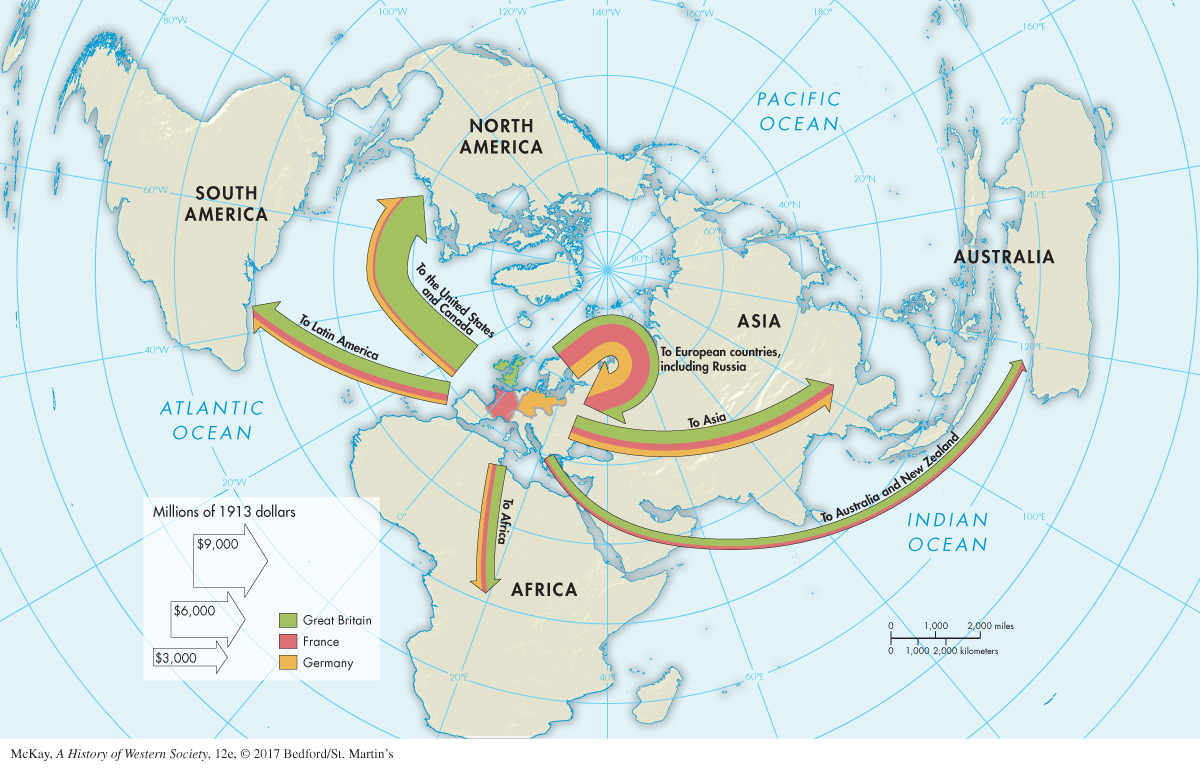A History of Western Society: Printed Page 794
A History of Western Society, Value Edition: Printed Page 762
A History of Western Society, Concise Edition: Printed Page 793
The World Market
Commerce between nations has always stimulated economic development. In the nineteenth century Europe directed an enormous increase in international commerce. Great Britain took the lead in cultivating export markets for its booming industrial output, as British manufacturers looked first to Europe and then around the world, seeking consumers for its growing numbers of mass-
Take the case of cotton textiles. By 1820 Britain was exporting 50 percent of its production. Europe bought 50 percent of these cotton textile exports, while India bought only 6 percent and had its own well-
In addition to its dominance in the export market, Britain was also the world’s largest importer of goods. From the repeal of the Corn Laws in 1846 (see Chapter 21) to the outbreak of World War I in 1914, Britain remained the world’s emporium, the globe’s largest trader of agricultural products, raw materials, and manufactured goods. Under free-
Improved transportation systems fostered international trade. Wherever railroads were built, they drastically reduced transportation costs, opened new economic opportunities, and called forth new skills and attitudes. European investors funded much of the railroad construction undertaken in Latin America, Asia, and Africa, which connected seaports with resource-
The power of steam revolutionized transportation by sea as well as by land. Steam power began to supplant sails on the oceans of the world in the late 1860s. Passenger and freight rates tumbled as ship design became more sophisticated, and the intercontinental shipment of low-
The revolution in land and sea transportation encouraged European entrepreneurs to open up and exploit vast new territories around the world. Improved transportation enabled Asia, Africa, and Latin America to ship not only familiar agricultural products — spices, tea, sugar, coffee — but also new raw materials for industry, such as jute, rubber, cotton, and coconut oil. The export of raw materials supplied by these “primary producers” to Western manufacturers boosted economic growth in core countries but did little to establish independent industry in the nonindustrialized periphery.
New communications systems were used to direct the flow of goods across global networks. Transoceanic telegraph cables, firmly in place by the 1880s, enabled rapid communications among the financial centers of the world. While a British tramp freighter steamed from Calcutta to New York, a broker in London could arrange by telegram for it to carry American cargo to Australia. The same communications network conveyed world commodity prices instantaneously.
As their economies grew, Europeans began to make massive foreign investments beginning about 1840. By the outbreak of World War I in 1914, Europeans had invested more than $40 billion abroad. Great Britain, France, and Germany were the principal investing countries (Map 24.1). The great gap between rich and poor within Europe meant that the wealthy and moderately well-

Most of the capital exported did not go to European colonies or protectorates in Asia and Africa. About three-
Much of this investment was peaceful and mutually beneficial for lenders and borrowers. The extension of Western economic power and the construction of neo-